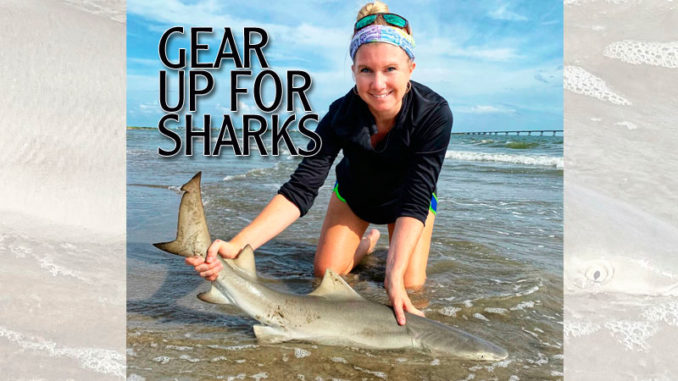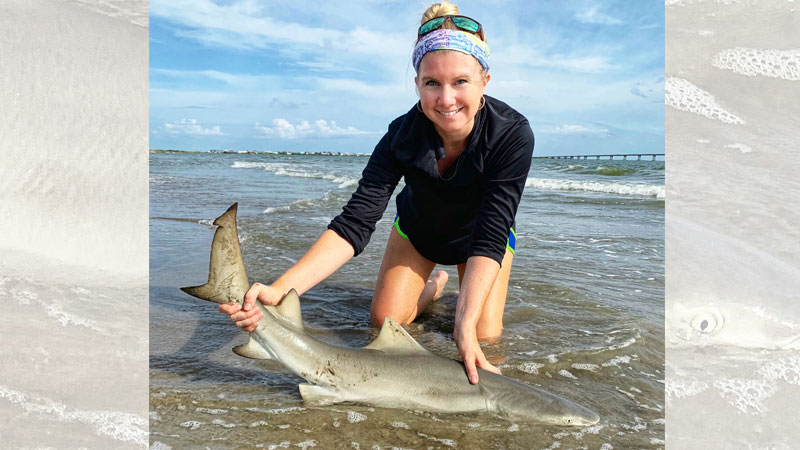
Sharks are too often portrayed as “menacing man-eaters” thanks to Hollywood’s notorious 1975 film Jaws.
Not only are sharks important to the ecosystem, they are an irreplaceable commodity for coastal communities. Due to overfishing — mainly for shark fins — and commercial by-catch, oceanic populations of sharks have been decreasing.
However, shark-fishing and dive-related activities are still in high demand across the Gulf of Mexico. Louisiana, even though a lesser-known shark destination, is no exception to the demand.

Shark-fishing has been recently interwoven with conservation efforts to protect the species. Whereas, TAG Louisiana hasn’t started an Apex Predator Program, shark anglers are encouraged to volunteer for other tagging initiatives such as NOAA. Even if your interests in shark fishing around Louisiana, especially Elmer’s Island, is purely recreational, gear and cognizance handling techniques are a requirement.
The surf around Elmer’s Island that borders Caminada Pass is known for producing trophy bull reds year-round. However, as many anglers can confirm, nice-sized sharks are abundant, too. Without the right gear and knowledge, however, there is no way you can land one over 4 feet.
Gear for surf sharks
Typical, surf-fishing for sharks requires some preparation. Sand spikes, or rod holders, should usually be around 5 feet in total length so a few feet can be pushed down into the sand for security. I have had several rod holders break due to a shark taking off with my bait. Quality sand spikes can be made relatively inexpensively using PCV pipe.
You will also need shark rigs made with about 4 feet of wire leader. Sharks can shred a mono leader before you get a chance at battling the apex predator. Also, their sandpaped-textured skin can break mono. Hooks should be non-stainless steel, non-offset circle hooks with the barbs filed down. This allows for a quicker release.
My go-to shark bait is freshly netted mullet. However, stingray is the preferred bait for bigger sharks. You want to be able to sling the bait out as far as possible or paddle it out in a kayak. The further you get it out, the better chance a big shark will take it.
A medium-heavy surf rod around 8 to 10 feet is needed. My preference for Elmer’s Island sharking includes heavy spinning tackle and a 7000 series or larger reel spooled with high-capacity braid, 80-pound test at a minimum. This will allow for a stronger hookset.

Don’t forget to bring bolt or cable cutters capable of cutting through the hook and/or wire leader. There may be a situation where the hook won’t come out and you need to quickly release the shark. Also, when picking your spot to shark, ensure that the location you intend to fish is not around any swimmers.
Safety and conservation
The Florida Fish and Wildlife Conservation Commission provides a shore-based, shark-smart fishing education course. There is no cost and all you need is a log-in. The course helps educate anglers on safe practices, maximizes shark survival rate, minimize conflict between beach-goers and shark anglers, and assist with identification knowledge.
Three parting tips for future shore-bound shark anglers around Elmer’s Island. Don’t fish for sharks if the surf is too rough. Continue around the furthest point to the sheltered shoreline within Caminada Pass. If you cannot identify the shark, release it as quickly as possible. Educate yourself as much as possible about the targeted species as you would with any other quarry.